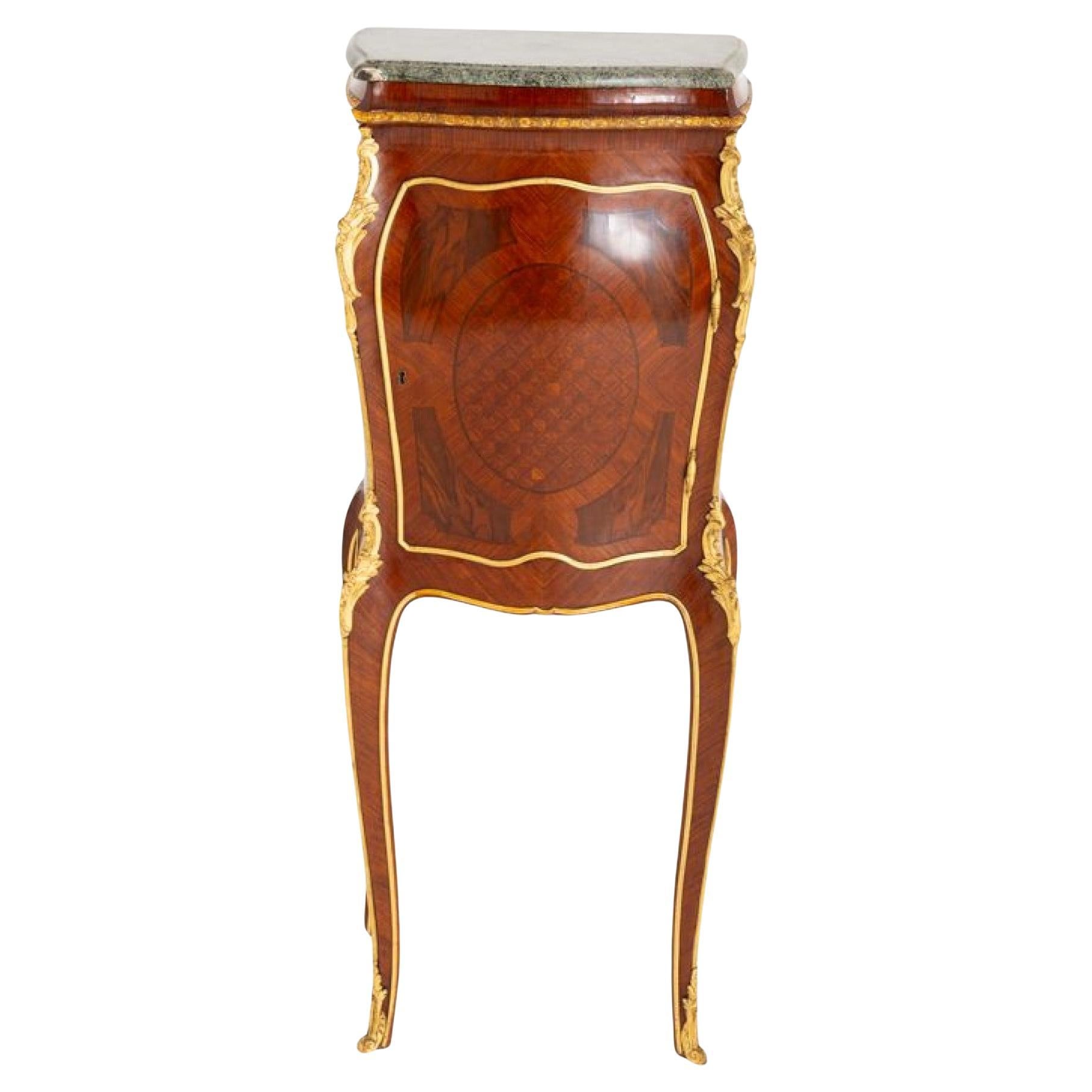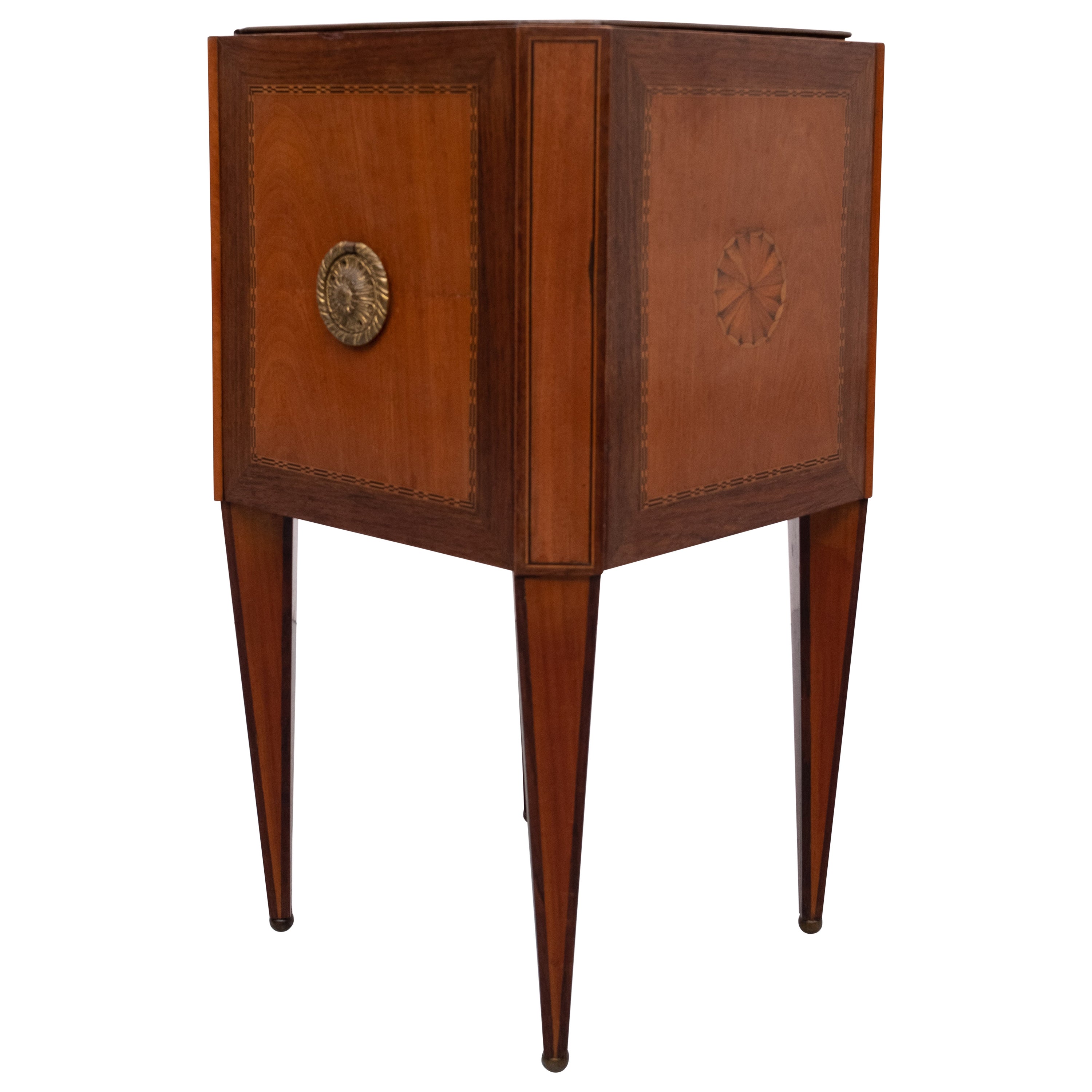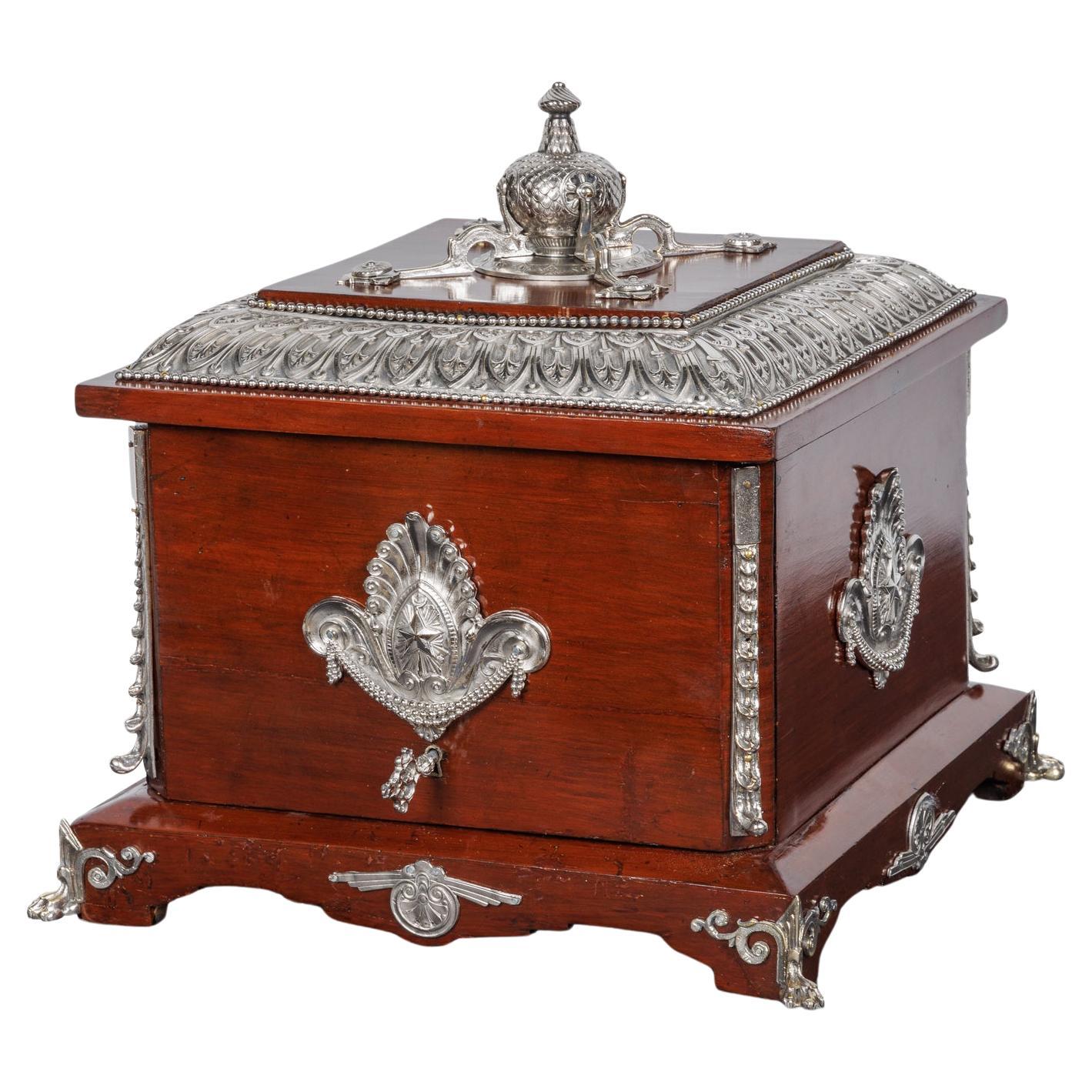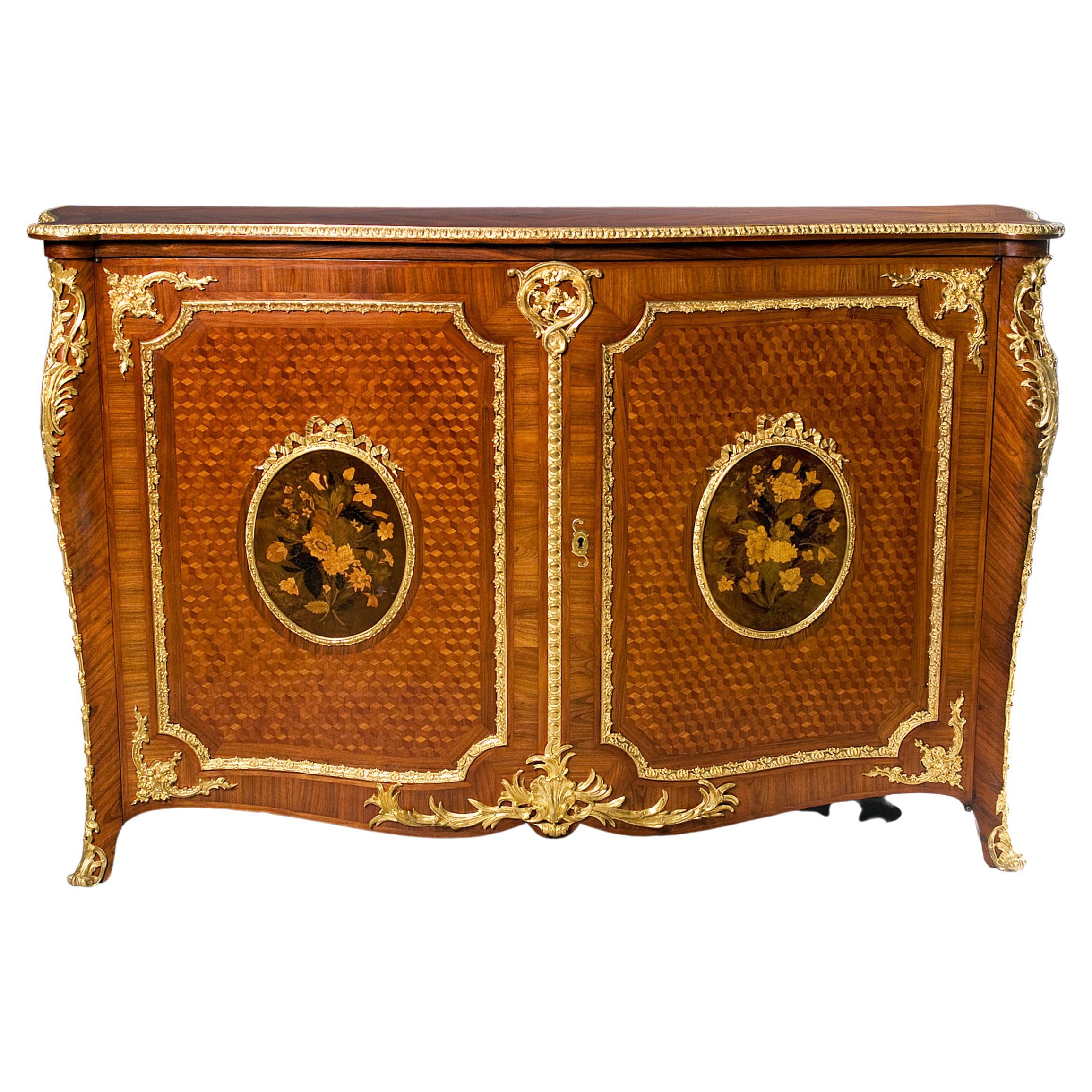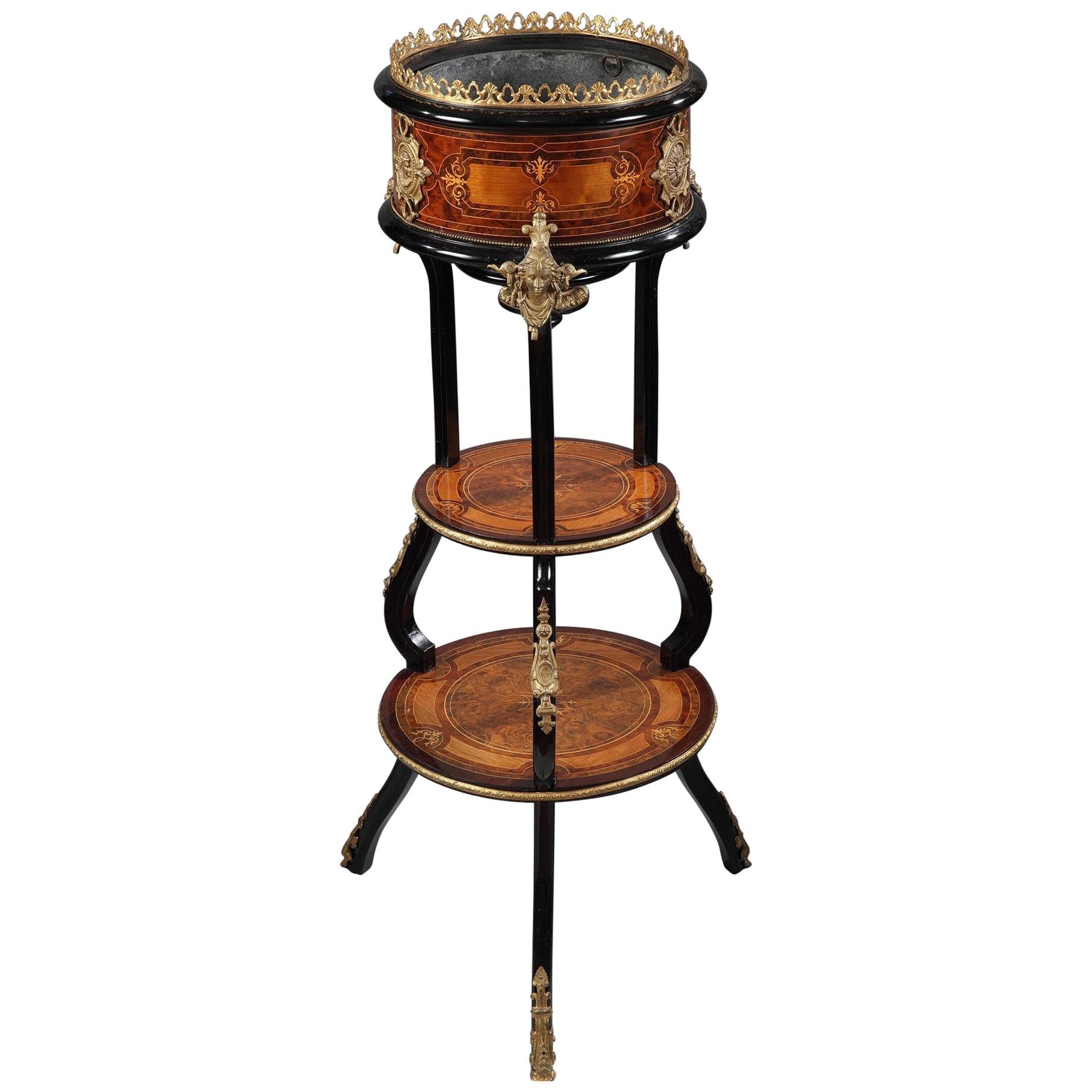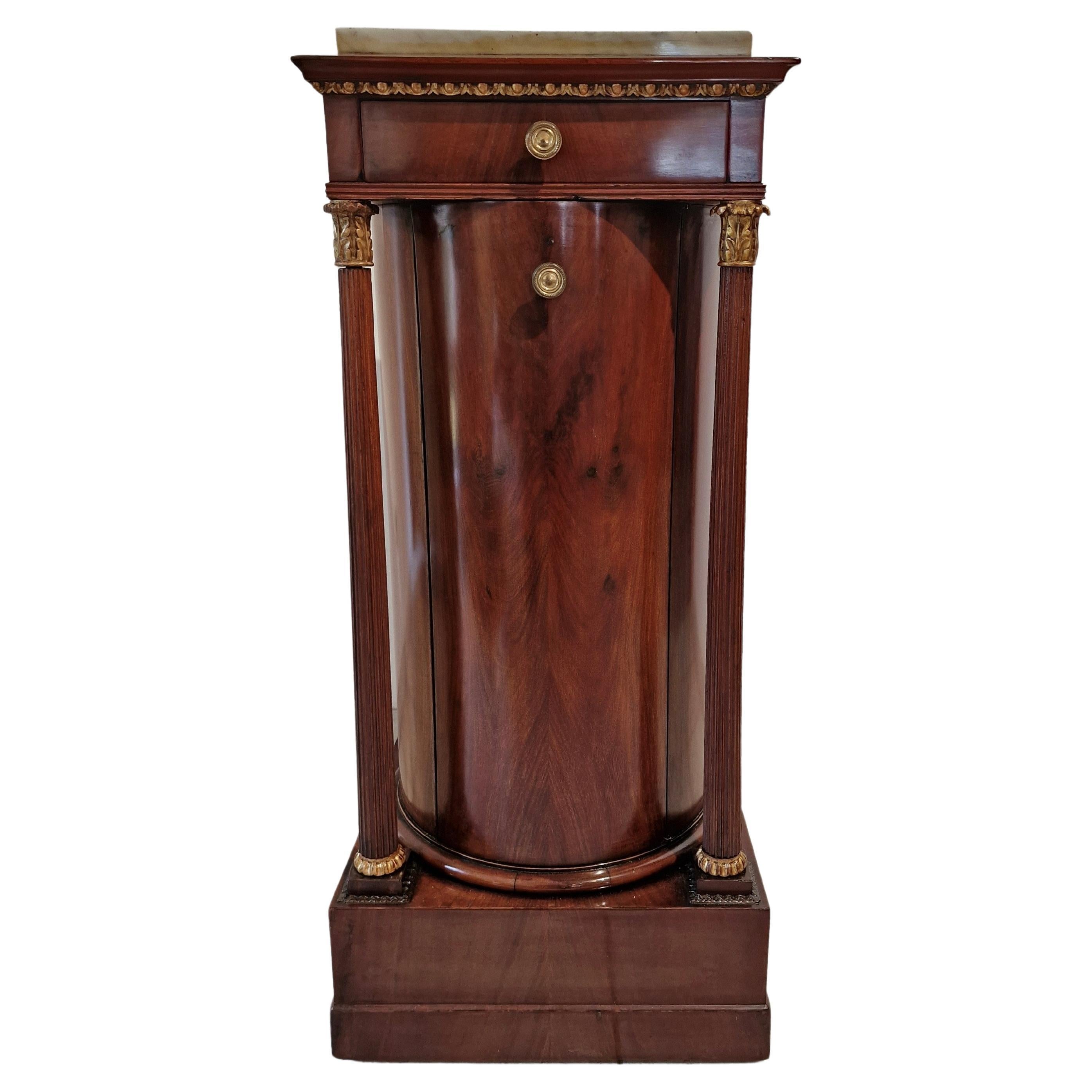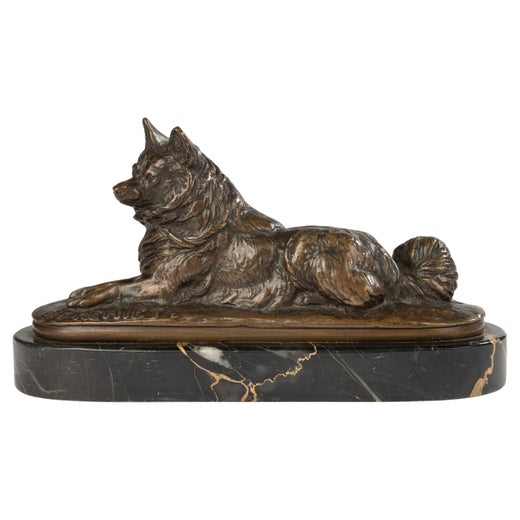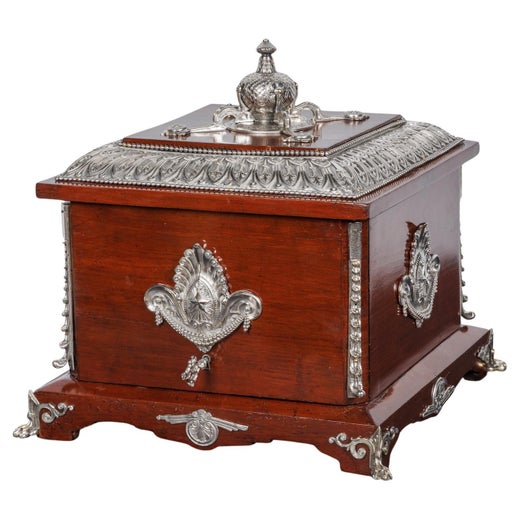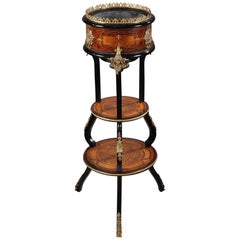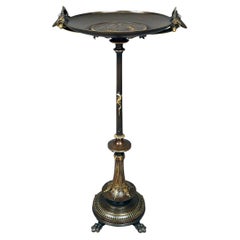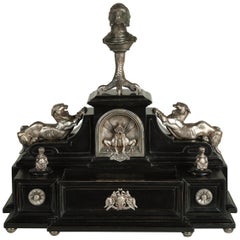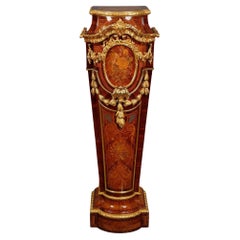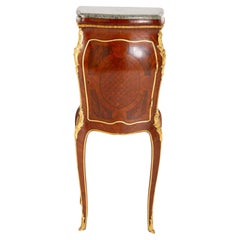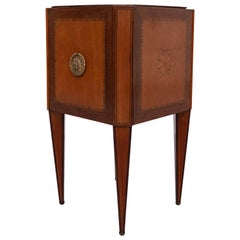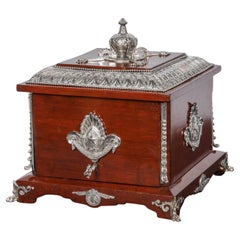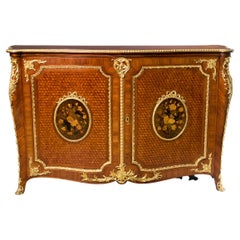Neo-Greek Cigar Cellarette, C.G. Diehl, E. Frémiet & J. Brandely, Circa 1867
Informazioni sull’articolo
- Creatore:
- Dimensioni:Altezza: 124 cm (48,82 in)Larghezza: 55 cm (21,66 in)Profondità: 42 cm (16,54 in)
- Stile:Neogreco (Nello stile di)
- Materiali e tecniche:
- Luogo di origine:
- Periodo:
- Data di produzione:circa 1867
- Condizioni:Usura compatibile con l’età e l’utilizzo.
- Località del venditore:PARIS, FR
- Numero di riferimento:Venditore: 13511stDibs: LU3860312491202
Emmanuel Fremiet
Charles-Guillaume Diehl
Charles-Guillaume Diehl fondò la sua azienda di ebanisteria e decorazione al 19 di Rue Michel Comte nel 1885. I suoi laboratori producevano piccoli ed eleganti mobili in legno di palissandro e tuia e novità con abbellimenti in bronzo e porcellana. Tuttavia, furono le sue scatole di lusso (cantinette per liquori, armadietti per sigari, scatole per giochi, astucci per il cachemire, astucci per gioielli) a garantire la fama di Diehl. Già premiato con una medaglia di bronzo all'Esposizione Universale del 1855 a Parigi, espose un jardinière con colonne di porcellana e un armadietto per liquori all'Esposizione delle Arti Industriali del 1861. In collaborazione con il designer Jean Brandely (attivo dal 1867 al 1873), Diehl rinnovò il suo repertorio decorativo e creò sorprendenti mobili in stile greco, che ebbero un successo folgorante all'Esposizione Universale di Parigi del 1867, dove i suoi armadi ottennero anche una medaglia d'argento. Alcuni motivi erano così tipici dell'opera di Diehl che sono stati ampiamente commentati dal critico d'arte J. Mesnard nel suo libro "Les Merveilles de l'Exposition Universal de 1867". Scrive di un tavolo in cui "il ciondolo con ganci e il motivo a ventaglio a raggiera che orna la trabeazione sono incisi con amore" e di un portagioie in cui "la testa in stile greco costituisce la parte essenziale dell'ornamento in bronzo dorato". Per questa Esposizione Universale, Diehl formò anche una partnership con due famosi scultori: Emile Guillemin (1841-1907), che scolpì il rilievo di una credenza in mogano con bronzi dorati galvanici ed Emmanuel Frémiet (1824-1910), che eseguì il basso rilievo di un medagliere in cedro con intarsi e bronzi argentati. Diehl fu nuovamente premiato con una medaglia d'onore all'Esposizione Centrale dell'Unione del 1869 e con una medaglia al progresso all'Esposizione Universale di Vienna del 1873. Elogiato dalla critica, Diehl è considerato uno degli artisti più innovativi del XIX secolo. La sua ultima apparizione fu all'Esposizione Universale di Parigi del 1878, dove presentò, al di fuori del concorso, le sue creazioni più recenti, tra cui un tavolo da lavoro in intarsio, che con il suo motivo naturalistico a cavalletta anticipava l'Art Nouveau.
- SpedizioneRecupero del preventivo…Spedizione da: PARIS, Francia
- Politica di reso
Altro da questo venditore
Mostra tuttoDi antiquariato/d’epoca, Anni 1870, Francese, Neogreco, Vasi e fioriere
Bronzo
Di antiquariato/d’epoca, Anni 1860, Francese, Neogreco, Guéridon
Bronzo
Di antiquariato/d’epoca, Anni 1860, Francese, Neogreco, Calamai
Rame
Di antiquariato/d’epoca, Anni 1860, Francese, Napoleone III, Piedistalli...
Bronzo
Di antiquariato/d’epoca, Anni 1880, Francese, Luigi XVI, Secrétaire
Bronzo
Di antiquariato/d’epoca, Anni 1860, Francese, Guéridon
Marmo, Bronzo
Ti potrebbe interessare anche
Di antiquariato/d’epoca, Anni 1870, Stile impero, Mobili contenitori
Legno
Di antiquariato/d’epoca, Anni 1860, Olandese, Luigi XVI, Vasi e fioriere
Legno
Di antiquariato/d’epoca, XIX secolo, Francese, Napoleone III, Portasigar...
Bronzo
Di antiquariato/d’epoca, Metà XIX secolo, Francese, Napoleone III, Buffet
Bronzo
Di antiquariato/d’epoca, Anni 1810, Italiano, Stile impero, Tavolini lat...
Marmo
Di antiquariato/d’epoca, Anni 1790, Inglese, Giorgio III, Portariviste
Mogano
